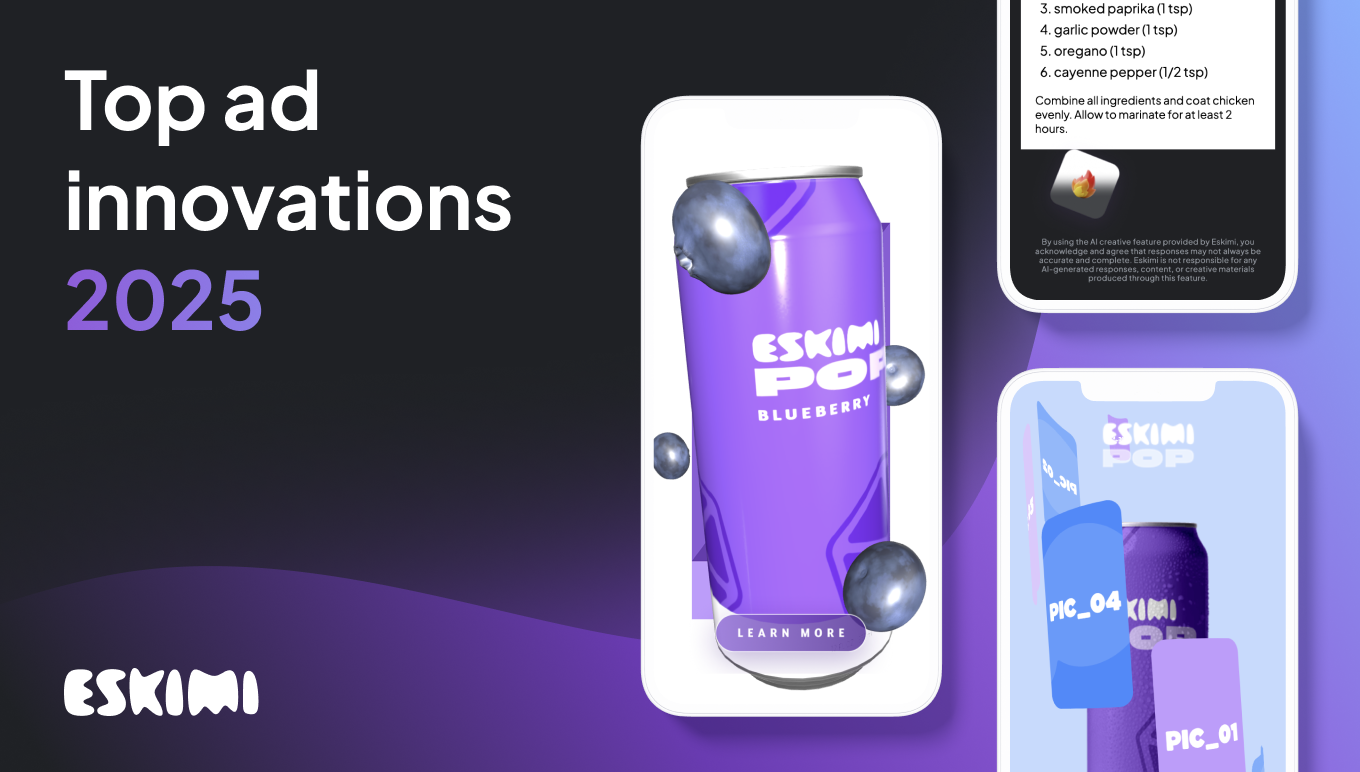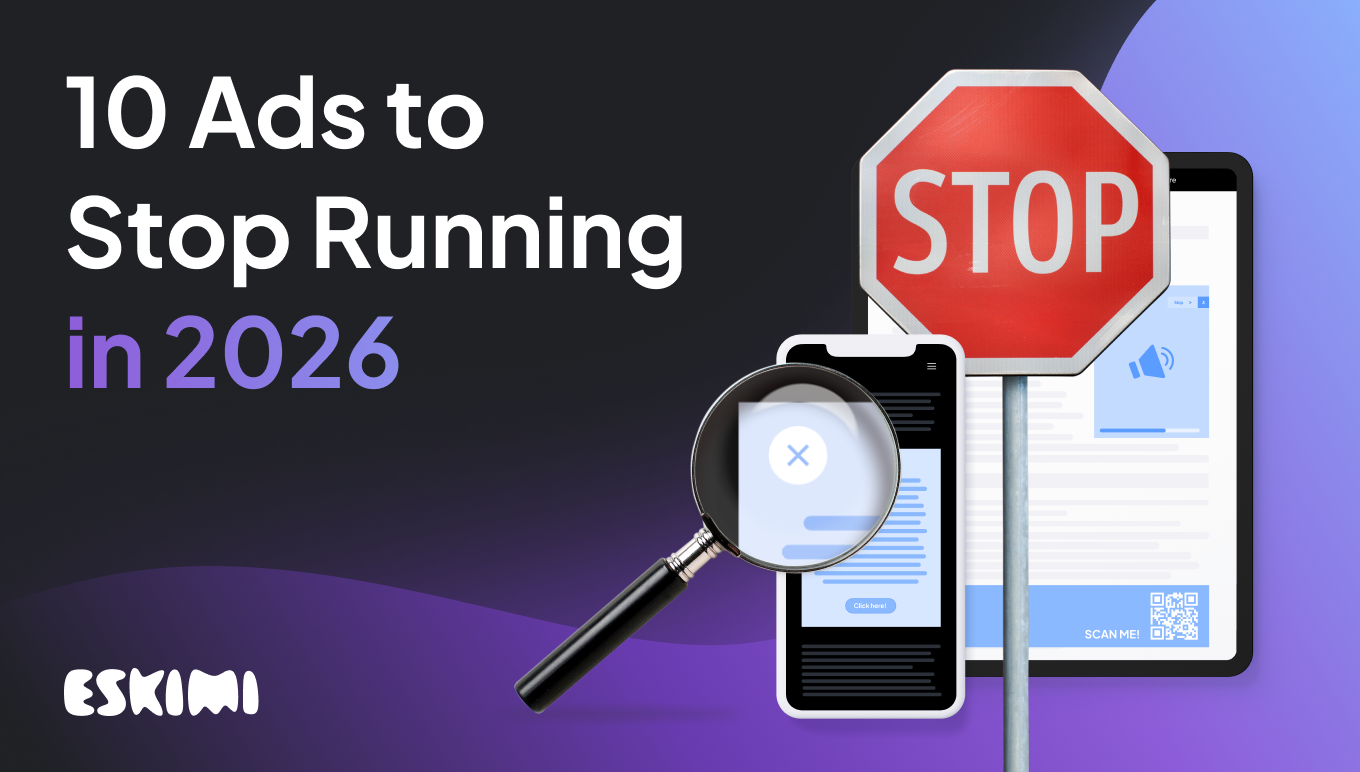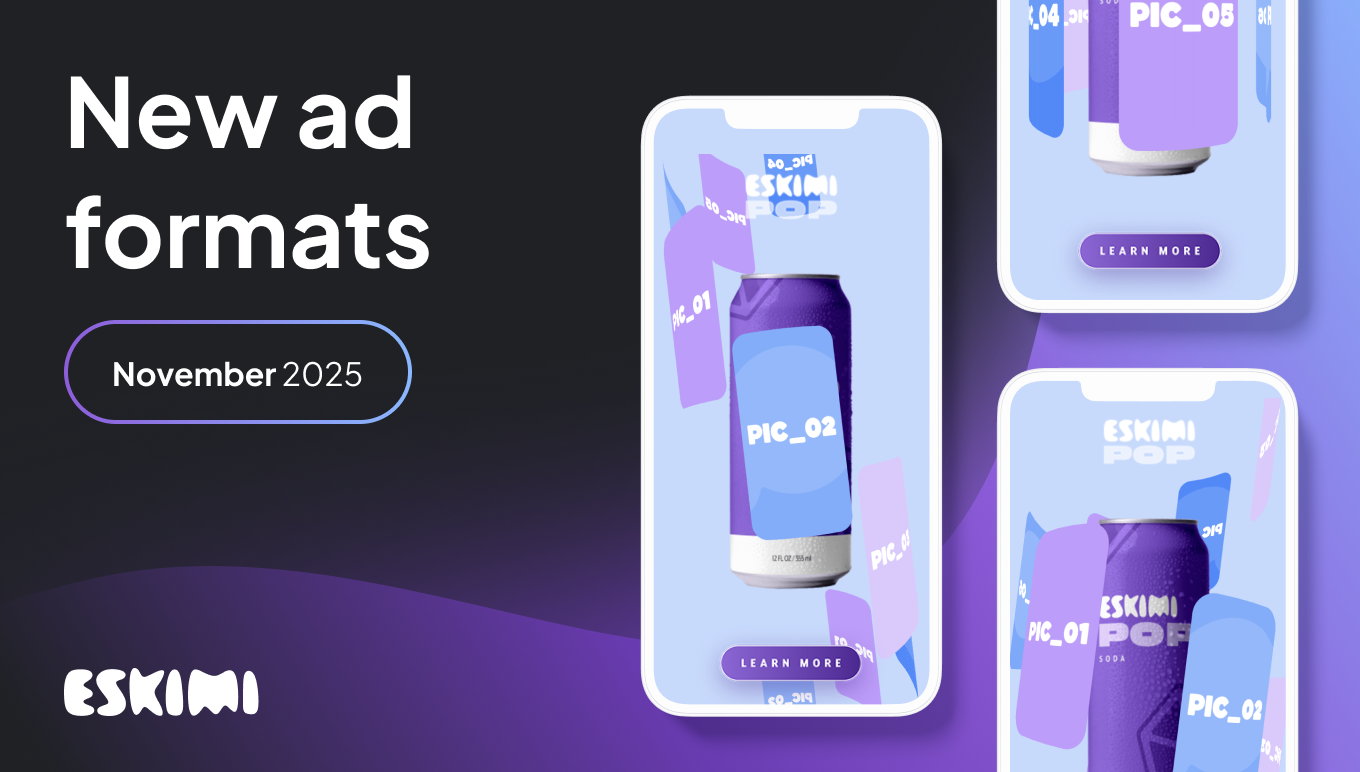What Is Behavioral Targeting And Why Use It?

Personalization has always been on every marketer’s to-do list.
But in today’s fiercely competitive environment, simply keeping it on the list is no longer an option – it’s time to start actively using the information that you have to cater to your audience’s individual needs.
With every click, search, and purchase internet users make online, they leave behind a wealth of data and insights. This data can be used to personalize digital advertising campaigns and create more relevant and engaging experiences for specific audience segments.
This is also known as behavioral targeting.
In this post, you’ll learn what it is, why you should use behavioral targeting, how it differs from similar targeting options, and more – let’s dive in.
What is behavioral targeting?
Behavioral targeting is a digital technique used by advertisers and marketers to deliver personalized content to their target audiences based on their online activities.

In other words, behavioral targeting considers what a user does (and doesn’t do) while browsing and enables advertisers to use this information to deliver targeted messages that resonate with the user’s interests and needs.
The primary purpose of behavioral targeting is to reach relevant users based on their interests, therefore, achieving higher engagement rates, increasing conversions, and boosting overall business growth.
What data is collected and used for behavioral targeting?
“Online activities” is a very broad term; for some, it can be difficult to grasp the scope of the data being collected for behavioral targeting.
Does it include checking in at a cafe? Making a purchase on Etsy? Visiting an online pet store? And where is all this data stored?
First things first, there is no universal way to gather behavioral data. You can use multiple sources like mobile apps, CRM systems, websites, DMP (which is one of the most common ways to collect, organize, and store information for advertisers), and so on.
Whichever one you use, the data collected for behavior targeting can include the following:
- Search data. Search data shows users’ current needs, interests, and desires, e.g., they may be researching a new smartphone or looking for cheap travel ideas.
- Demographic data. Users’ age, gender, even income, and other demographic factors can be used to tailor ads to specific groups of people.
- Purchase history. Purchase data can be used to predict future purchase decisions and serve ads based on the collected information.
- Other online behavior. Any other activities, like searches within specific sites, pages viewed on those sites, duration of visit, content read, time since last visit, clicks, or interaction with site elements, can also be used to build a profile of user interests.
It doesn’t mean advertisers collect or use ALL of this data, though. Sometimes it’s best to focus on specific data points only, and sometimes what works best is a combination of them.
Through practice, you will quickly start to understand what suits your brand best.
How does it work?
You already know that the core of behavioral targeting is data collection and what information is used for targeting.
But how does building a user profile based on their interests and preferences typically looks from opening a browser/app to receiving a targeted ad?

1. Data collection and analysis
The process starts with a user visiting a website that uses cookies or other tracking technology to gather information about their activity on that site. The data collected may include the pages this specific user visits within site, products viewed, or purchases made.
2. User segmentation
A profile that includes user interests, preferences, and online behavior is created based on the information collected. Such profiles are then clustered into user segments by behavior and stored in a database to be used for serving targeted ads.
3. Targeting
Advertisers use these clustered segments to deliver ads that are more likely to resonate with specific users. For example, if you’ve been searching for tennis rackets online, you may start seeing ads from sports shops or other related products.
4. Optimization
Over time, you’ll be able to measure the effectiveness of your ads and adjust the types of ads shown, their frequency, the channels you use to reach your target audience, and so on.
Importance of audience segmentation and personalized ads
From everything we already know, it’s clear that to use behavioral targeting, advertisers need to categorize their audience into specific groups, which we also call audience segments, based on particular factors.
This way, as an advertiser, you can start delivering tailored messages and campaigns that resonate with the audience's unique needs and preferences – or, in other words, personalize – and do it with confidence, relying on data, not guesses.
What data plays the biggest role in this, and what are some of the most common types of behavioral segmentation?
- Occassion-based segmentation. This segment divides customers based on when they are most likely to interact with your brand, e.g., holidays, birthdays, seasons, etc.
- Segmentation based on purchase and usage behavior. This behavioral segmentation type is based on factors such as purchasing frequency (light, medium, and heavy users), providing insight into the buying stage customers might be in, obstacles they’re facing, search queries, and much more.
- Loyalty-based segmentation. Segmentation based on loyalty allows you to nurture existing repeat customers, learn why they keep coming back, and use this information to increase their lifetime value even further.
- Benefit-based segmentation. This segment categorizes users based on the benefits they seek from a particular product or service, allowing advertisers to understand why a product drives purchases (quality, price, reviews, and anything else).
- Etc.
Importance of personalization
Behavioral targeting is crucial for driving personalized ads as it tracks and analyzes consumers’ online behaviors and uses the information acquired to increase relevancy.
Personalization itself has always been important for any marketing efforts, although in the last few years, due to the global pandemic and shifts in consumer behavior, providing exceptional experiences became a must for standing out from the competition.
Here are some numbers to prove it:
- In 2022, 62% of consumers said that a brand would lose their loyalty if it delivered a non-personalized experience (compared to 45% in 2021).
- 76% of brands use real-time behavioral data to personalize their websites.
- 71% of consumers expect personalization. 76% of them get frustrated when they don’t find it.
- 66% of consumers say it’s important for brands to tailor messaging to their needs, and 65% want targeted promotions.
- 76% of consumers are more likely to buy from brands that personalize, and 78% are more likely to refer such brands to their family or friends and make repeat purchases.

All in all, behavioral targeting is the main tool for achieving the level of personalization that can positively impact your business, allowing companies to gather data and deliver ads for specific interests and needs.
Types of behavioral targeting
There are two ways to do behavioral targeting, which are:
- Onsite behavioral targeting
- Network behavioral targeting
One of the key differences between these two is where and how the data is collected.
Onsite behavioral targeting
Onsite behavioral targeting focuses on collecting data about user behavior on a particular website or app. It involves such actions as pages viewed, products searched, time spent on the page, and similar.
The collected data can then be used to understand what users are interested in, what they prefer, and identify some behavior patterns. Then, this information can be used to deliver targeted content or offers to that user when they return to that site/app.
For example, if a user spends their time on the website looking for a new sweater, next time, they may see targeted ads or recommended products related to sweaters.
Network behavioral targeting
As opposed to onsite behavioral targeting, network behavioral targeting focuses on collecting data about a user’s behavior across multiple websites. Often, it helps to gather additional data and create a clearer image of the audience.
Actions involved in network behavioral targeting can vary from websites they visit and pages they view to searches made or content they interacted with.
The collected data is then used to create user segments and deliver targeted advertising on various websites.
For instance, if a user frequently visits cooking-related websites, they may be shown ads for kitchen gadgets on other websites they visit.
Behavioral targeting vs. contextual targeting
Behavioral targeting sometimes gets mixed with contextual targeting, as they both serve highly relevant ads to particular audiences. However, these two are not the same thing.

While using behavioral targeting, you can create and deliver ads based on the previous website visitor's behavior. With contextual targeting, the focus shifts to the website’s content.
For example, behavioral targeting allows you to deliver ads to people who recently showed interest in buying a lawn mower for their gardens. Meanwhile, using contextual targeting, your ads would appear on gardening-related websites, be visible to everyone who is looking for this kind of content and is more likely to find lawn mowers ads relevant.
Put simply, behavioral targeting involves specific user information and relies solely on user data; contextual targeting relies on the page’s content and doesn’t require any user data.
Behavioral targeting: Pros and cons
Why should you use behavioral targeting?
- Insights into the target audience. By collecting behavioral user data, advertisers can better understand their target audience – their interests, behaviors, preferences, and use this information to refine their targeting and improve overall advertising strategies.
- Higher ad relevance. Thanks to the data on users’ online behavior, you can deliver ads that are more likely to be interesting to the people you’re targeting.
- Increased campaign effectiveness. As a result of delivering ads that are “more interesting” to specific users, you can increase the effectiveness of ad campaigns and get better results.
- Reduced ad waste. Reduced ad waste is a direct consequence of ad relevance, as delivering ads to users who are more interested in them can improve the efficiency of advertising spend.
- Better user experience. Behavioral targeting can also improve the overall user experience, as your audience will be seeing ads that better resonate with their interests.
- Greater ad control. By using data to deliver targeted ads, you can be more in control of who sees your ads and when, optimizing campaigns and reaching audiences more effectively.
Are there any drawbacks to behavioral advertising?
- Privacy issues. Since behavioral targeting heavily relies on collecting and analyzing user data, it naturally raises privacy concerns among internet users who are uncomfortable with the idea that their online activities are being tracked and used for advertising.
- Narrower reach. If you want to reach a larger, more diverse audience, behavioral advertising won’t help you here, as it’s most effective when targeting specific user segments.
- Ad fatigue. Behavioral targeting can sometimes result in users seeing similar ads over and over again, which can reduce their attention and decrease engagement.
- Technical challenges. Implementing behavioral targeting requires knowledge and expertise, so it might be technically challenging. Therefore, it’s recommended to find yourself a reliable advertising partner.
Behavioral targeting example: Amazon
Amazon is one of the best examples to illustrate behavioral targeting. The Everything Store uses the collected data to display several different sections of offers, and personalized recommendations actually make up a significant portion of Amazon’s revenue.

To get you inspired, here are some ways how Amazon uses its recommendation machine:
- Browsing History. Based on your previous searches on Amazon, you get suggestions for similar items you might be interested in purchasing.
- Recommended For You. If you’ve ever signed in to Amazon, performed a search, or even bought something, the system will suggest a selection of products from relevant categories. This is available in the “Your Recommendations” section and aims to encourage shoppers to buy additional items.
- Frequently Bought Together. To increase order value, Amazon ads a “frequently bought together” section on product pages where you can see other items that might go well with your choice. A really simple example of this would be offering to buy a mouse pad when looking for a mouse.
Is behavioral targeting ethical?
User data on the internet is a sensitive topic and can raise many questions and concerns about privacy and data protection. These concerns are not always wrong, as there are both ethical and unethical ways to approach customer behavior tracking.
However, privacy topic isn’t an untamed area, and to address these concerns, various laws and regulations protect user privacy and data security.
For example, in the European Union, the General Data Protection Regulation (GDPR) requires companies to obtain consent from individuals before collecting and using their personal data. Similarly, the Federal Trade Commission Act (FTC Act) or Children’s Online Privacy Protection Act (COPPA) protects the privacy and security of user data in the US (different states might also put local privacy acts in place, e.g., California Privacy Rights Act).
So while behavioral tracking is regulated by law, works with user consent, and technically isn’t unethical, it is essential for brands to use it responsibly and transparently. Or in other words, find the right balance between the benefits of this targeting option, ethical concerns, and legal requirements surrounding the collection and usage of user data.
What does the future hold for behavioral targeting?
Behavioral data is becoming much more controlled and much less available for a few reasons:
- Privacy concerns and regulations are increasing. As privacy becomes a more prominent issue, new regulations like the General Data Protection Regulation (GDPR) in the EU, the California Consumer Privacy Act (CCPA) in the US, and other similar laws worldwide will continue to shape the landscape of behavioral targeting. These regulations will require companies to be more transparent about their data collection practices, obtain user consent, and potentially limit the extent to which user data can be used for targeted advertising.
- Shift towards first-party data. With cookie decay, increasing cross-site tracking removal and 3rd party data quality challenges, brands are relying more heavily on first-party data to personalize their marketing efforts. This approach increases data quality and removes reliance on third-party data.
- Contextual targeting is becoming great again. As regulations make it more challenging to utilize behavioral data, advertisers are shifting their focus towards contextual targeting. Contextual also helps brands comply with privacy regulations while still reaching their target audience.
- Technological advancements. Artificial intelligence and machine learning already play, and will increasingly play, a crucial role in refining and improving behavioral targeting techniques, including better understanding of user behavior, predicting preferences, and optimizing ad targeting in real-time.
- Privacy-preserving technologies. Companies are creating and adopting privacy-preserving technologies, such as federated learning, differential privacy, and homomorphic encryption, to process user data without violating privacy regulations. This can help brands maintain their ability to deliver personalized experiences while complying with privacy laws.
Start delivering highly relevant ads to your target audience
Behavioral targeting is still something brands use a lot as it enables them to tailor their advertising campaigns to specific user behavior. Its effectiveness has been proven by companies of all sizes, and it continues to be a go-to choice for delivering highly relevant ads, at least for now.
It’s vital to remain (or become) transparent about user data collection and usage to gain users’ trust and avoid raising privacy concerns. It will most definitely pay off as by analyzing user behavior and preferences, advertisers can deliver targeted ads to consumers, resulting in better engagement and improved ROI.
Looking to launch your next advertising campaign? Contact the Eskimi team or book a demo for a smooth start.
Level Up Your Advertising with Eskimi
- Reach 96% of Open Web
- 2,500+ Targeting Options
- 100% Managed or Self-Service
- In-House Creative Studio Team
- Display, Video, In-Game & CTV
- #1 Rated DSP on G2





